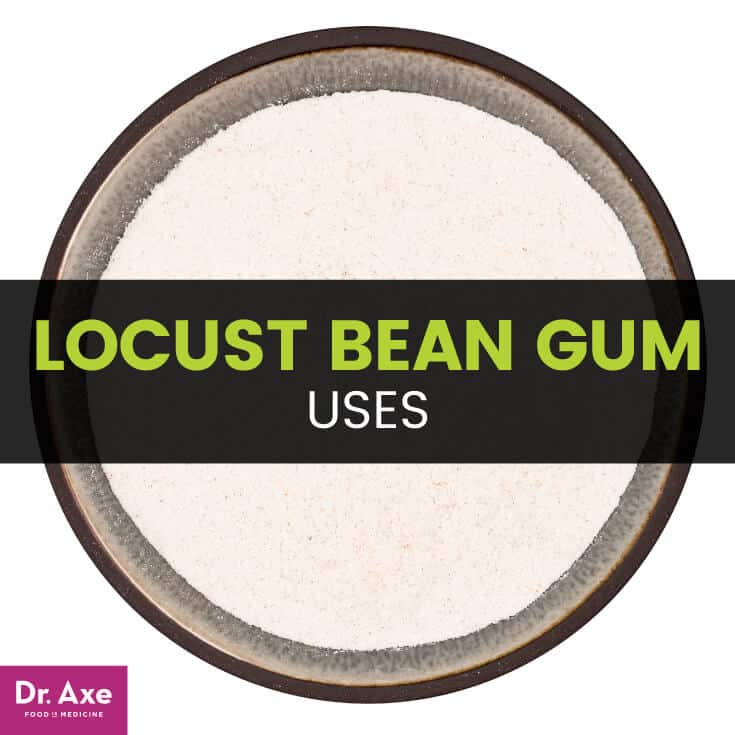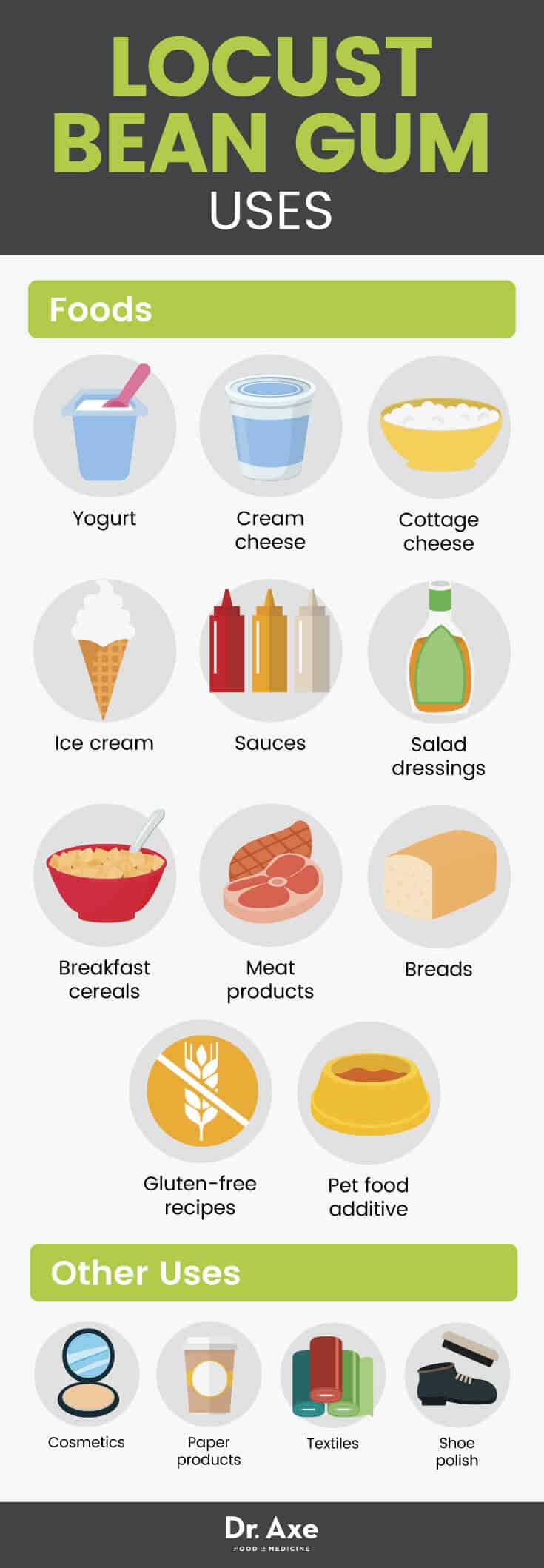This Dr. Axe content is medically reviewed or fact checked to ensure factually accurate information.
With strict editorial sourcing guidelines, we only link to academic research institutions, reputable media sites and, when research is available, medically peer-reviewed studies. Note that the numbers in parentheses (1, 2, etc.) are clickable links to these studies.
The information in our articles is NOT intended to replace a one-on-one relationship with a qualified health care professional and is not intended as medical advice.
This article is based on scientific evidence, written by experts and fact checked by our trained editorial staff. Note that the numbers in parentheses (1, 2, etc.) are clickable links to medically peer-reviewed studies.
Our team includes licensed nutritionists and dietitians, certified health education specialists, as well as certified strength and conditioning specialists, personal trainers and corrective exercise specialists. Our team aims to be not only thorough with its research, but also objective and unbiased.
The information in our articles is NOT intended to replace a one-on-one relationship with a qualified health care professional and is not intended as medical advice.
Locust Bean Gum: The Pros & Cons of This Common Thickening Agent
September 5, 2017

Locust bean gum is a natural food additive that comes from the carob seeds of the carob tree. Similar to guar gum and gellan gum, locust bean gum is added to a variety of food products, including yogurt, cream cheese and ice cream. In food, it’s used primarily as a thickening and stabilizing agent. Locust bean gum is also gluten-free and sometimes used in foods to provide a chocolaty flavor. (1)
It’s not very well-known that both guar gum and locust bean gum actually appear to have some significant health benefits. However, like guar, the gum that comes from locust bean does have some possible drawbacks as well.
So is locust bean gum good or bad for you? Let’s take a look at both the pluses and minuses of this intriguing yet often overlooked ingredient. Sneak preview on the plus side: Scientific research says that locust bean gum may benefit many major health concerns, including diabetes, heart disease, digestive health and even colon cancer — though it’s also a substance that can have negative effects as well.
Locust Bean Gum Nutrition Facts
What is locust bean gum? This gum is best known as a thickening and gelling agent added to many different foods. Also known as carob bean gum, carob gum and carobin, it comes from the seeds of the carob tree. The carob tree or locust bean tree (Ceratonia siliqua) is a member of the pea family and native to the eastern Mediterranean region.
How is carob bean gum made? So the carob tree has pods that contain both seeds and pulp. It’s specifically the seed’s endosperm that gets milled to create carob bean gum powder. What is the endosperm? The endosperm is the nutrient-rich tissue that surrounds the embryo within plant seeds.
The nutritional content of 2.7 grams of locust (carob) bean gum is about: (2)
- 9 calories
- 2 grams carbohydrates
- 2 grams fiber
While locust bean gum doesn’t contain a ton of nutrients, it does hold a significant amount of health-promoting dietary fiber. Just a few grams of locust gum contains about 10 percent of daily fiber needs.
5 Locust Bean Gum Benefits
1. May Help Lower Cholesterol
Studies have shown that locust bean gum may have potential cholesterol-lowering effects on its consumers. Research published in the American Journal of Clinical Nutrition looked at the effects of locust bean gum on adults and children with either high cholesterol or normal cholesterol. All of the subjects consumed food products that either had no locust bean gum (LBG) or contained LBG in an amount ranging from eight to 30 grams per day.
Not only did the LBG group not show any negative side effects, but those subjects also showed greater decreases in their overall cholesterol as well as their bad (LDL) cholesterol levels. The study’s conclusion: Including LBG in food seems to be a non-risky way to successfully decrease high cholesterol levels. (3)
2. Improves Blood Sugar Levels
An animal study published in the journal Phytotherapy Research looked at the effects of both guar gum and locust bean gum on blood glucose and insulin levels. The animal subjects were given a diet containing 15 percent of either locust bean gum or guar gum for two to six consecutive weeks. The researchers observed that the subjects experienced a decrease in both insulin levels and glucose levels. The animal subjects also had lower blood cholesterol levels by the end of the study. (4)
As a soluble fiber, locust bean gum is suspected to be beneficial to human diabetics as well. (5) This make sense, since it helps maintain normal blood sugar.
3. Treats Gastroesophageal Reflux Disease (GERD)
A study published in the Journal of Pediatric Gastroenterology and Nutrition looked at the effects of consuming an anti-regurgitant milk containing locust bean gum on 30 infant subjects experiencing regurgitation on a daily basis who had no other health issues. The infants either received milk with the typical amounts of locust bean gum, a milk with a reduced amount of the gum or a control milk.
The researchers observed that compared to the control milk, both groups consuming the LBG-thickened milks experienced fewer regurgitations — 50 percent less than the control group to be exact. The conclusion of the study was that both locust bean gum formulas helped decrease GERD symptoms in infants. (6)

4. Relieves Diarrhea
Scientific research has shown that locust (carob) bean gum can be helpful to dehydrating and nutrient-depleting diarrhea. One study specifically looked at the anti-diarrheal influence of locust bean juice on 80 children between the ages of four months and two years. These children were all admitted to the hospital with acute cases of diarrhea and either mild or moderate dehydration. The young patients were randomly given either a World Health Organization (WHO) standard oral rehydration solution (ORS) or both the WHO ORS as well as locust bean juice.
The results were impressive: The children who took ORS and locust bean juice had their diarrhea last a 45 percent shorter amount of time. Additionally, three children who only received the ORS ended up with hypernatremia (a high concentration of sodium in the blood), but no one in the ORS plus locust been juice group experienced hypernatremia. The study’s researchers concluded that locust bean juice may help in the treatment of diarrhea, and additional studies are warranted by their findings. (7)
5. Potentially Discourages Colon Cancer
Due to its significant fiber content, it’s believed that carob bean gum may discourage the formation of colon cancer. (8) Multiple scientific studies have shown that, in general, a higher dietary fiber intake is associated with a reduced risk of cancer of the colon. (9, 10) Hopefully there will be studies in the near future that look more at the possible relationship between carob bean gum consumption and the reduction of cancer risk, but there is promise for LBG in colon cancer treatment.
Locust Bean Gum Drawbacks and Potential Side Effects
Locust bean gum appears to be safe for most people in normal dietary amounts. In high doses, it does seem to be toxic to some pregnant animals, however — though animal studies have shown that long-term (two-year) intake (5 percent of diet) of LBG does not result in any toxic or carcinogenic effects. (12)
On the negative side, a very small study several decades ago did show that carob bean gum may interfere with the absorption of vital nutrients. Specifically, the subjects of the this study who consumed carob bean gum experienced a significant decrease in their absorption of iron, calcium and zinc. (13)
Another scientific study also showed that the addition of carob bean gum to a food or meal may slow the gastric emptying rate, which means it creates an undesirable delay in the movement of food from the stomach to the small intestine. (14) If you suffer from any gut issues, it may be wise to avoid locust bean gum unless you find it doesn’t bother you.
Locust bean gum side effects can occur if you’re allergic to it as well. Discontinue consumption of any food products containing LBG if you suspect an allergy. The exact symptoms of a locust bean gum food allergy can vary by person. Always seek medical attention for any serious allergic reactions. (15)
How to Find and Use Locust Bean Gum
Locust or carob bean gum isn’t as easy as guar gum to find. However, some speciality food stores as well as online resources do carry it. If you’re having trouble finding it online, searching for “carob bean gum” may be helpful. If you’re asking a salesperson, using both names can help as well.
If you’re making homemade ice cream, the addition of locust bean gum is great at discouraging unwanted ice crystal formation. In sauces and salad dressings, it can makes an effective thickening agent. For gluten-free noodles and other gluten-free recipes, locust bean gum can provide that gelatinous element that’s lacking without gluten. Sometimes, carob bean gum is combined with guar gum to create an extra thick gel. It’s also combined with xanthan gum to create a thinner yet still stretchy gel.
In gluten-free bread recipes, binding agents like xanthan, guar gum and locust bean gum can make effective substitutes for that intentionally missing ingredient (gluten). Using locust bean gum in gluten-free bread recipes has been shown to increase loaf height. (16)

Locust Bean Gum Recipes
Looking to make some gluten-free noodles? Locust bean gum powder is just what you need. This recipe for Mango Noodles includes just three ingredients: mango juice, locust bean gum and agar (a jelly-like substance that comes from algae).
Try these other healthy recipe ideas using locust bean gum:
Locust Bean Gum History and Interesting Facts
Archaeological findings have revealed that the carob tree from which locust bean gum is derived goes way back — I’m talking about circa 4000 B.C. when it was believed to be growing in Israel. In ancient Egyptian times, locust bean gum (which was sometimes called “the Egyptian fig”) was actually a key mummification ingredient. (17)
The majority of locust bean gum today is used by the food industry. It helps thicken and stabilize foods. For example, it can prevent ice cream from crystallizing.
Food products that commonly include locust bean gum:
- Dairy products (like ice cream, yogurt, cream cheese, cottage cheese, etc.)
- Breakfast cereals
- Salad dressing
- Sauces
- Meat products
- Breads
You can also find locust or carob bean gum as an additive in pet foods. Non-food products like cosmetics, cigarettes, paper products, textiles and shoe polish take advantage of locust bean gum’s thickening and stabilizing abilities too.
Final Thoughts on Locust Bean Gum
I’m in no way saying you should go buy locust bean gum so you can start supplementing with it because there are definitely downsides to this substance. But I wanted to let you know that locust bean gum is a common food additive that does appear to have some worthwhile health properties, so in moderation (always the key word), it may have positive health effects when you consume it.
On the other hand, some people are bothered by locust bean gum and make a point to avoid it. No matter which side of the fence you’re on, it’s always smart to educate yourself. Now you know what locust bean gum actually is and why many food products include it. And if you’re a gluten-free baker, you may be excited to have a new way to boost your loaf height in the near future.













